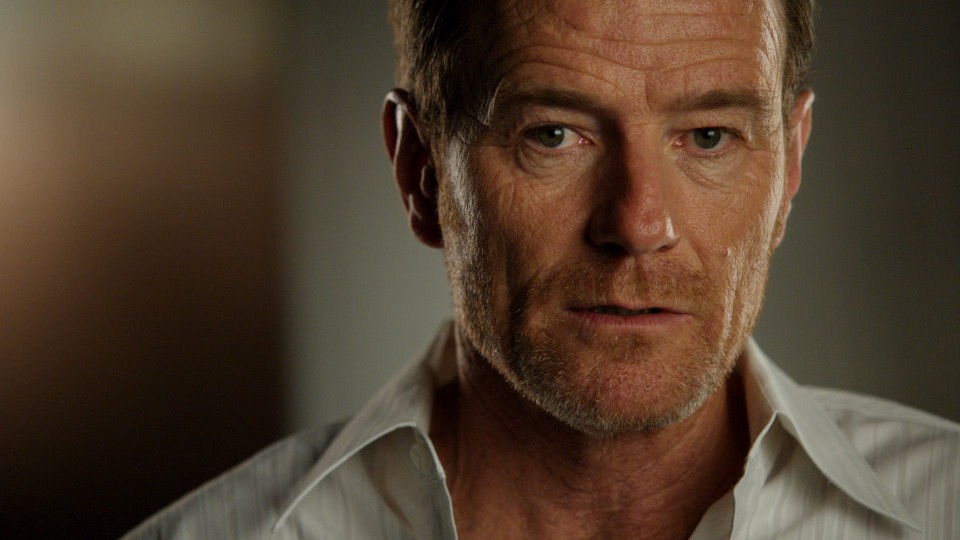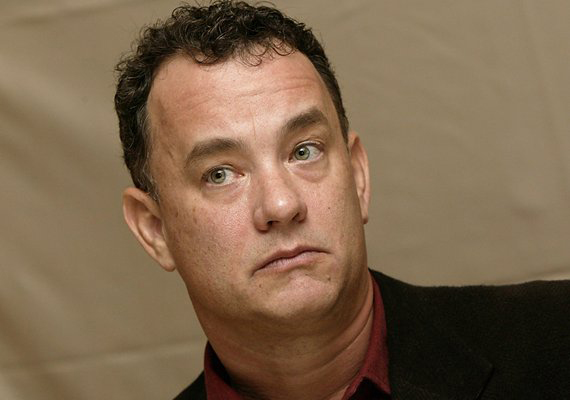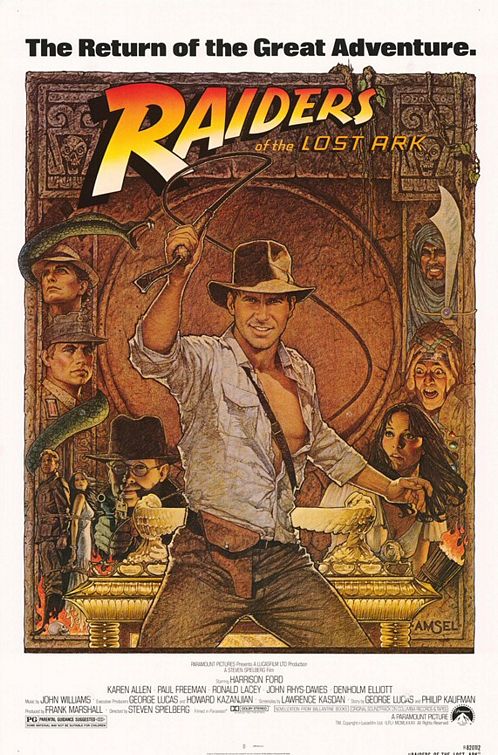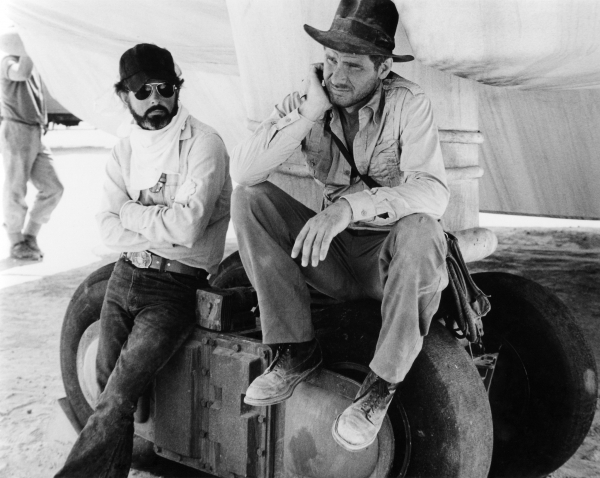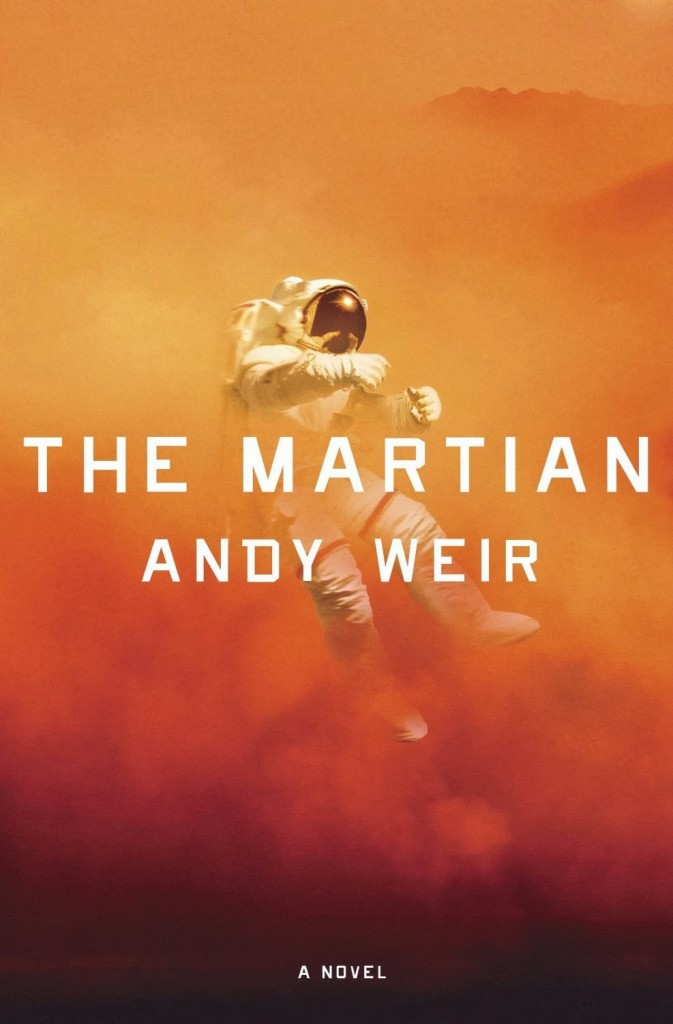Search Results for: scriptshadow 250
Get Your Script Reviewed On Scriptshadow!: To submit your script for an Amateur Review, send in a PDF of your script, along with the title, genre, logline, and finally, something interesting about yourself and/or your script that you’d like us to post along with the script if reviewed. Use my submission address please: Carsonreeves3@gmail.com. Remember that your script will be posted. If you’re nervous about the effects of a bad review, feel free to use an alias name and/or title. It’s a good idea to resubmit every couple of weeks so your submission stays near the top.
Genre: Thriller/Drama
Premise (from writer): A salt-of-the-earth father, trying to leave a checkered past behind him, is put through the ultimate test when his estranged son gets in deep with a human devil in the Appalachian woods.
Why You Should Read (from writer): My 6th spec, feeling like it’s all coming together now. Taking an honest look at my writing prior, it would be easy to say I was trying to write “the next great American story” (large, sweeping political storylines, obtuse, lush descriptions, “profound” dialogue) and this time, I’m just trying to write a movie. I hit a lot of things this site discusses: race against the clock, continually mounting problems, clear stakes and goals, a memorable villain and short action descriptions which I think makes for a fun and quick read. Recent films like BLUE RUIN, THE ROVER, and A WALK AMONG THE TOMBSTONES have rejuvenated my passion for writing gritty thrillers.
Writer: Sean McIntyre
Details: 106 pages
So Cinderella comes out this weekend. Which was written by Chris Weitz. Who is also writing one of the new Star Wars movies. To the average avocado, this may seem like insignificant data. But to me, it’s like saying that the guy who invented spring rolls is going to cook me a pizza. Sure, writers are capable of writing many different things. But Chris Weitz’s sensibilities fall way more in line with Cinderella than Star Wars to me. I don’t want Obi-Wan Kenobi turning into a pumpkin after doing the Kessel Run in over five parcecs. I want a lightsaber decapitating a bantha. And I don’t know if I’m going to get that. Which may sound random but I feel compelled to bring it up.
Speaking of films opening this weekend, we’ve got a rare SPEC SCRIPT making a box office appearance in Run All Night. The script was written by spec specialist Brad Inglesby, and will be his second script to make it to the big screen (the first was “Out of the Furnace,” which was originally titled “The Low Dweller.”). Run All Night is way more movie-friendly than Furnace, so it should do better. “Monsters Under The Bed” seems to hail from that same gritty universe. Might it, too, one day make it to the theatrical finish line? Let’s find out.
48 year-old Marty Davies has lived a tough life. He got guilted into taking the rap for a crime he didn’t commit, joined the Aryan Nation in prison in order not to get raped every night, and has only recently gotten back into the real world, where he’s trying to put his taxi business together and reconnect with his son, Terry, a gambling addict.
After Terry makes a bet he can’t pay, he finds himself indebted to the town’s local psychopath, Rey-Rey, who, yes, is every bit as crazy as his name implies. Whenever you feel the need to repeat your name as part of your name, you’re probably a few fish shy of an aquarium. Go ahead and try it out. The next time someone asks you your name, say it’s “Scott-Scott.” Observe the fear.
Rey-Rey calls papa Marty and tells him that if he doesn’t come up with 50 grand in a week, Terry’s nostrils are going to be entry points for his next bullet experiment. Marty leaps into action… kind of. He calls his buddies and his new girlfriend to ask for money. But this Kickstarter Project barely gets off the ground before he realizes it’s not getting funded.
After some other plans fail, Marty decides to rob a bank – a plan that results in some major collateral damage. But nothing will compare to what happens when he crosses Rey-Rey. From that point on, his son isn’t even the issue anymore. This is between Marty and Rey-Rey. And only one of them is coming out alive.
I have to commend all the writers who have made it to Amateur Friday recently. They beat out these other scripts for a reason. I mean, Sean’s got a lot to be proud of here. He does a great job setting up Marty. He does an awesome job creating a larger-than-life villain in Rey-Rey. There are a lot of fun – albeit disturbing – scenes between Rey-Rey and Terry which showed a lot of imagination. I’m not surprised at all that “Monsters” emerged as last week’s winner.
Unfortunately, I’m going to have to be a bit of a monster myself. A monster under the script pile that is. My big issue with “Monsters” was the A.D.D. nature of the second act. I was particularly frustrated with the fact that instead of having one plan, Marty had a thousand of them. First he went off to ask for money from a friend, then went to ask another friend, then he tried to get the money through a loan. At one point he even went off to play high-stakes poker.
Rey-Rey’s deal kept changing as well. First he wanted 50,000. Then he was okay with 25,000. Then something would happen and he wanted 100,000. Then 250. Then 500. In the meantime, Terry’s doing pornos to earn his money back, then working the drug line, and then he’s got to be a drug mule and drive a car somewhere.
It seemed like there was a new plan from both sides every five pages.
I think what Sean was trying to do here was keep the story fresh. Which is noble. But it ended up feeling like stalling. It was like he didn’t know what do until the bank robbery, so he just kept trying to distract us with new plans every couple of scenes. In reality, however, all the plans were basically the same. And after 30 pages of false starts, I wanted the car to actually go somewhere.
Another issue the script ran into is that grown men aren’t the most sympathetic kidnap victims. Women are good kidnap victims. Children are good kidnap victims. But it’s really hard to make an audience care about a big strong man getting rescued.
Can you make it work? Sure. But you can also get through a marathon carrying a 25 pound barbell. That doesn’t mean you want to.
I actually tried to think of any movie that has done this successfully (made the kidnapping victim a man) and I couldn’t think of one. Maybe you guys will have more success (challenge to Poe!). And I hope you find one. I’m curious to know how they did it.
The final mistake “Monsters” made was in its third act. Marty actually gets Terry back from Rey-Rey, and then the script goes into this strange “everything is happy father and son montage” where father and son hide out and play catch every day. It isn’t until after that’s over that we get the Marty-Rey-Rey showdown.
There’s always going to be a calm before the third act storm. But if that calm lasts too long, you can kill the momentum of your entire movie. Everything about your script has been building up to this third act. If you then say, “Let’s go take a vacation before the big battle,” your audience is going to scream “What????” Once Marty got his son back, a lot of air got released from the balloon. I’m not sure you want to structure the screenplay this way. The climax should probably be Marty either saving or failing to save his son.
This was another solid entry into the Amateur Friday lion’s den. But these issues definitely need to be shored up before this script reaches its potential.
Screenplay link: Monsters Under the Bed
[ ] what the hell did I just read?
[x] wasn’t for me
[ ] worth the read
[ ] impressive
[ ] genius
What I learned: There’s something about this revenge/kidnapping set-up, where characters are confined to one area the entire movie, that’s really hard to make work. You have a hero that has to do something, yet you can’t allow him to do it yet! Because if he does, the movie will be over by page 50. Hence why Sean’s forced to create all these false-starts with Marty. This is why scripts like “Run All Night” are easier to write. If the characters are always on the move (either the chasers or the chasees) you don’t have to come up with any stall tactics. You keep going until the capture or the escape is made. The one exception to this seems to be what they did in John Wick and The Equalizer. Which is to create a hierarchy of characters that the hero must defeat before they confront the big dog. Even though the story is confined to one area, like “Monsters,” there are a clear series of goals that must be achieved before the hero can take on the villain, giving the script a natural progression until the climax.
ATTENTION: THE SCRIPTSHADOW NEWSLETTER HAS BEEN SENT – Check your Spam and Promotions Folders if you did not receive. Hope you enjoy it!
Genre: Cray-Cray
Premise: When humanity discovers a human on Mars, they bring him home, where he learns all about the peculiarities of earth.
About: This adaptation of the classic sci-fi novel was written in 1995 specifically as a vehicle for Tom Hanks (this would’ve been right after Forrest Gump). The script was written by Dan Waters, who became a screenwriting sensation after the cult film everyone in Hollywood loved, Heathers. Waters wrote Batman Returns and Demolition Man in 1992, but has had trouble finding credits since (his most recent film is Vampire Academy). Paramount, who commandeered the project, seems set on bringing these old sci-fi novels to life, as they just bought the rights to The Stars My Destination last week (another Heinlein novel). Robert Heinlein is a legend in the sci-fi community, penning tons of books, including the sci-fi classic, Starship Troopers. Don’t tell Paul Verhoeven (who directed the film version of Troopers) that though. The director is said to have never read the book: “I stopped after two chapters because it was so boring,” he said. “It is really quite a bad book.” He later asked a friend to just explain it to him.
Writer: Dan Waters
Details: 156 pages! – 5/22/95 draft
Before you read this review I need you to go to Amsterdam, locate the nearest Mushroom store, and buy as many mushrooms as you can afford. Eat them. Then, and only then, will you have a chance at understanding this screenplay and my review of it.
I’ve read some fucked up stuff in my day. But this is the kind of script that makes David Lynch look like John Lee Hancock. I’m pretty sure I know why Tom Hanks passed on this. Because he couldn’t find a translator to make sense of it.
This is Birdman meets sci-fi meets Forrest Gump. Which may sound delightful to some of you. But I’m warning you. After you read this, there’s a 14% chance you may no longer understand the English language.
Stranger in a Strange Land starts when our first expedition to Mars ends in us finding a naked man running around the red planet with a bunch of rock monsters.
Mmm-hmmmm.
Okay.
The Marstronauts grab the human Martian, named “Mike,” and bring him back to earth. This new earth is very different from the earth we know now. While we no longer have war, the government’s been globalized, and radical religious leaders have become the most important figureheads on the planet.
A female reporter, Gillian, sneaks in to the hospital to get a story on Mike, then ends up stealing him and the two go on an adventure together. Where? To Jubal Harshaw’s house of course. Who’s that, you may ask? An ex ghost writer. And physician. And lawyer. Who now owns a hippy compound.
Sure. Why not?
What happens next? Well, by all measurable accounts , absolutely nothing for the next 40 pages. We just hang out at Jubal’s house where Mike, who speaks some gibberish form of English (“You happy me very,”) reads books and learns about humanity!
Eventually, a “sort-of” plot emerges where we learn that Mike’s parents, who owned a billion dollar corporation, died in a mysterious plane crash and the World Organization took over their company. With Mike being the son, he’s technically the heir to that fortune, which means the WO may have reason to turn him into rock food.
What happens next may or may not have something to do with group sex. And death. And people eating the dead. And speaking to people from the afterlife. I can neither confirm nor deny that there are three scenes that actually make sense in this script. Or that an ending that actually wraps things up exists. You will have to read the script yourself to find out. Please report back to me once you do. Insanity hurts.
I’m not going to lie. After finishing this, I wasn’t sure the writer had ever written a screenplay before. Or anything for that matter. If this was a menu, it would’ve started with the instructions for building a treehouse. And it would’ve been in Chinese.
As an experiment, I read five pages of this script out of order and then five pages in order. The five pages out of order made slightly more sense than the consecutive ones. Which should tell you what you’re in for here. Since it’s hard to know who’s responsible for the incomprehensible nature of the story, because I’ve never read the novel, I’ll just assume that both of these guys are off their rockers. I mean, who the hell were the people celebrating this novel when it came out? CIA-obsessed transients who mumble the ingredients of ketchup to themselves at the Santa Monica McDonald’s?
While I could probably key in on 184 things that were wrong with this screenplay, I’ll start with an obvious one. If you’re going to center a story around a man who’s supposedly different from everybody else, you probably don’t want to make everybody around him just as crazy as he is. By doing so, the character doesn’t stick out at all.
Indeed, Mike is swallowed up by this screenplay. In the first 70 pages, he gets about 15% of the screen time. Instead, we focus on hippy-extraordinaire, Jubal Harshaw, a name that could only have been conceived with the influence of at least a dozen hallucinogens.
And then there’s the structure, or lack there of. Look, we all know that books go on for longer than screenplays. This is why they bring in screenwriters to adapt novels and not novelists. Because screenwriters specifically know how to cut stuff down and focus on the things that matter. They know how to EDIT.
Dan Waters never got that e-mail. This is 157 pages of Wanderosa, heavy on the random. Why in the world would you write a 40 page sequence at a man’s house without a single plot point pushing the story forward? I can find absolutely no excuse for this.
The core of every screenplay is the character goal. It’s giving your protagonist something they’re after and then pushing them towards that something. If you don’t do that, you’re going to end up with a screenplay that goes nowhere – that lasts 157 pages. Even in the most optimistic scenario, where this is an exploratory first draft, there was no attempt by the writer to rein in this story at all.
And it doomed them. If you’re Tom Hanks and you read this, you see your character featured 5 times in 70 pages and you don’t start putting together notes for the next draft. You say, “See ya later.” You have to at least put the illusion together that you tried. Any schmoe off the street can write a bunch of random thoughts for 157 pages. Skilled screenwriters are the ones who can find the core of a story and build a structure around it.
Or maybe… maybe Waters knew this was doomed from the get-go. There is something in production circles known as “suspension of disbelief.” If the audience can’t get past the artificial reality you’ve created, it doesn’t matter what you write. Is there any scenario under which a naked man running around on Mars with rock alien brothers is going to work? Probably not. So Waters just said, “Fuck it. If I’m going nuts, I’m going nuts all the way.”
It just goes to show that some properties aren’t meant to be turned into movies. Although maybe this is another opportunity to explore angles, like we did last Thursday. Might the Scriptshadow community have an angle for Stranger in a Strange Land that actually works? Share your thoughts in the comments section. In the meantime, I’m going to go research lobotomies.
Script link: Stranger in a Strange Land
[x] what the hell did I just read?
[ ] wasn’t for me
[ ] worth the read
[ ] impressive
[ ] genius
What I learned: For you writers out there who don’t believe in outlining, READ THIS SCRIPT. This is what happens when you don’t outline.
Genre: TV Pilot – Sci-fi Comedy
Premise: In the early 22nd century, when space travel is commonplace, a young ship commander accidentally flies his crew into a parallel dimension.
About: Paul Feig (Bridesmaids, The Heat) is one of the new faces for Yahoo’s recent infatuation with comedy half-hours. Yahoo and Amazon are looking for ways to differentiate themselves from the Netflix original programming dynasty and since Netflix loves its one hour dramas, the two media giants are going after comedy instead. Feig, who started in TV with the universally acclaimed “Freaks and Geeks,” a show that’s spawned every comedic actor working right now who didn’t come out of SNL, is coming back to television with Other Space, a show he originally conceived of ten years ago. That’s the draft I’m going to be reviewing today, the old one. Let’s check it out, yo.
Writer: Paul Feig
Details: 50 pages (but it’s in that old TV format where everything is double-spaced) – 1/12/04 draft
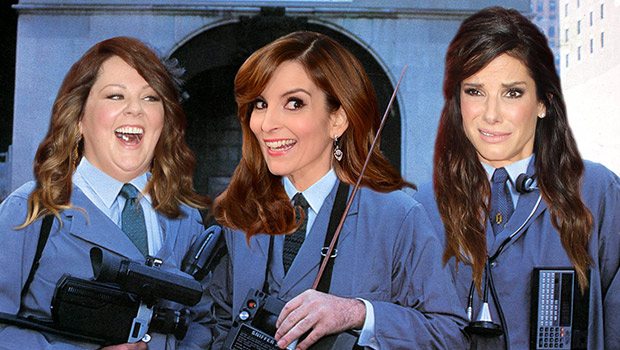 This would probably be the best female Ghosbusters trio
This would probably be the best female Ghosbusters trio
If you’re anything like me, you’re equal parts intrigued, worried, skeptical, and fascinated by this whole “All-Female” Ghostbusters thing Paul Feig is putting together. It has the potential to be really funny or REALLY bad. I mean, if the only reason you have an all female Ghosbusters team is because a director is really good with female actors, might that not be the best way to approach a story?
Isn’t the idea of a storytelling to grow ideas organically? Not because you’re trying to meet some mandate that will allow the movie to get a green light? Then you tack on this whole thing about how the previous Ghostbusters installments never happened, and we’re in hot slime. That’s a very curious position to take. You’re erasing from the archives some of the most lovable characters in cinema history. Is your core audience really going to be okay with that?
And how do you even begin to explain an all-female Ghostubsters team in a script? Are they going to have a sign on the front door that says, “Female applicants only?” What would be the logic in eliminating males from becoming Ghostbusters? I suppose you can write it in that the three main characters are friends from graduate school, just like the original Ghostbusters, but this setup is already feeling a mite forced.
I wouldn’t be surprised if, at some point, Feig said, “Uhhh, nothing about this feels natural,” and they ditch it again. Why does this project have to be so complicated? Make it so that, since 1989, the old Ghostbusters cleaned up the ghost problem in New York so that nobody’s seen a ghost in 25 years. But recently, a couple have been spotted, and some new Ghostbusters bring the old business back to life? People aren’t clamoring for a world-class set-up to a story about taking down ghosts. Just get us to some ghosts wreaking havoc and let’s have some fun!
And you know what, I like Feig as the director of an all-female OR all-male Ghostbusters reboot. I thought Bridesmaids was hilarious. The Heat was a perfectly conceived concept with some funny moments. This guy knows funny and seems to have the sensibilities to take on this project. But you can’t put the vice grip on this. Let the story breathe and don’t limit yourself. Here’s to hoping his pilot does the same…
Stewart Lipinsky may only be 21 years old, but he’s an ace with a star ship, and nails the toughest space simulator test the Space Federation’s got, the “surprise asteroid” test (all he had to do was run a fuel clean-out burst through the forward venting tubes). This allows Stewart to win command of his very own star ship, the USS Cruiser!
This would be wonderful if the rest of Stewart’s crew wasn’t so miserable. There’s his 24 year old sister, Karen, who’s pissed off that SHE’S not the new captain. There’s Navigator Tina, Stewart’s secret crush, who’s bummed out that she’s leaving her boyfriend. There’s best friend Michael, who’s upset HE didn’t win the captain position. And then there’s Kent, the allergy ridden science advisor who’s dad forced him to take this position.
As the crew heads out on their first deep space trip and Stewart tries to pump up crew morale, they accidentally float through a ripped pocket of the space-time continuum. It doesn’t take them long to realize they’re in a whole new dimension now where the laws of their previous universe don’t apply anymore.
In fact, the miserable crew all of a sudden starts being really nice to Stewart, encouraging him to celebrate this unheralded discovery by opening up all the air locks. Opening up all the air locks? That doesn’t sound right. Stewart snaps out of it and realizes that some sort of evil amoeba has slipped into the ship, creating a bunch of illusions in order to trick the crew into killing themselves!
This is the new universe they live in, one where they’ll have to adapt quickly if they plan to survive. And while it kind of sucks that they’re stuck here, they figure as long as they are, they might as well fly around and document it all in the unlikely event that they find a way back to their universe. And that, my friends, is our pilot.
I’ll tell you what I was hoping this wasn’t going to be. I was hoping it wasn’t going to be some uber Star Trek geek’s excuse to geek out about Star Trek scenarios for 30 minutes a week. So what happens in the very first scene? Stewart pops up from behind his command chair holding a metal Star Trek pin. “I found my Star Trek pin,” he says. “My dad would have killed me if I lost this.”
Oh boy.
I’ve made the disclaimer hundreds of times before that comedy is subjective, but I’m not sure anyone’s going to disagree on this one. There isn’t anything funny here. There are some amusing moments. There are some smiles to be had. But I’m not sure a single joke landed. When General Malarky confirms to Karen, Stewart’s sister, that he’ll get to be captain over her, her response is, “Permission to kill myself, sir.” Yeah, I smiled. But haven’t I seen that line uttered 10 billion times already? That’s the level of humor to expect here. Very middle-of-the-road safe stuff.
Which is fine if you’re writing a sitcom for CBS. Some might even argue it’s REQUIRED to write a sitcom for CBS. But this is Yahoo man! This is the internet! The place where you need not worry about crusty old men in suits questioning every joke. You get to take chances. Of course, Past Paul Feig did not know that Future Paul Feig would sell this to Yahoo in 10 years. I’m not even sure there was a Yahoo ten years ago. So I’ll give him a pass on that. But I won’t give him a pass on the safety of these jokes.
Now I don’t usually review half-hour pilots on the site, but an eye-popping number arrived on my internet this weekend which I’ve been unable to forget since. Did you guys know that The Big Bang Theory is worth 2.5 billion dollars! Not a typo. B. Bee. Beeeeeeee. Beeeeeeee-illion. That’s gotta mean that shows like say, Community, which get 1/4 or 1/5 the ratings are work HALF A BILLION dollars, right? Half a billion dollars for a 1.5 rating?? Sign me up! If you’ve got a good comedy idea, you should definitely be writing yourself a half-hour comedy show.
This brings up a question I’ve been battling with lately as far as the TV world. With SO MANY places to sell to these days, and with each of those places being so different (some need commercial breaks, some don’t, some have time constraints, some don’t, some want a 10 episode season, some 24, some are safe networks, some are riskier), how do you know how to write your pilot anymore? I’d write a CBS sit-com completely differently than I’d write an HBO sitcom. But then am I limiting myself? Should I split the difference? With movies you just write what you want to write. Ironically, TV shows, which are supposed to give you so much more freedom, are becoming harder and harder to tab with all these options. Maybe you TV experts can help me out. This industry is changing so darn fast, I can’t keep up with it, even when I’m hanging on to the tail of the USS Cruiser.
[ ] what the hell did I just read?
[x] wasn’t for me
[ ] worth the read
[ ] impressive
[ ] genius
What I learned: If you have a wild premise, you can’t deliver a safe execution. If you’re going to rev up our expectations with a show about a space crew that gets lost in another dimension, you can’t be delivering standard jokes like: “Permission to kill myself, sir.” You’ve made a promise to the reader that you’re going to do something unique. Playing it safe with the execution is breaking that promise.
Genre: Adventure
Premise: An archeologist who moonlights as an adventurer goes on a quest to find one of the most important religious relics in history, the Ark of the Covenant.
About: This is the first draft of Raiders of the Lost Ark, written by a young Lawrence Kasdan. Kasdan wrote the draft off of 100 pages of notes from Spielberg and Lucas. Every studio in Hollywood passed on Raiders, thinking it too over-the-top. Finally, Paramount stepped in to finance. Kasdan would write four more drafts before production.
Writer: Lawrence Kasdan
Details: 144 pages! (June 15, 1978 draft)
A great exercise for any screenwriter is to read early drafts of movies they love. One of the toughest things for beginners to understand is how much cutting is done from draft to draft. When you start out in writing, you want to include EVERYTHING because you want to show the world just how big and amazing your imagination is. But great screenplays trim every snippet that isn’t necessary. That’s why they read so well (and play well) – because there’s never a dull moment.
I was particularly eager to read this first draft of Indy, a film many consider to be perfect. Was that there in the first draft? Or did it start off as a total stinking mess? Because the first draft of another 80s favorite, Back to the Future, was all over the place. I actually have no idea how they got that to where they did. But the difference here is that Spielberg and Lucas gave Kasdan 100 pages of notes. They outlined this screenplay to the T (yay, more outlining debate in the comments!) before a word was written. Let’s see how it paid off.
For those who don’t know Raiders of the Lost Ark well, there’s this guy, Indiana Jones, an archeologist/adventurer, who specializes in getting hard to find items. He’s told that Hitler is trying to find a supposedly mystical object called The Ark of the Covenant. The army wants Jones to find it before the Nazis do. Indiana must find a series of items first that’ll help tell him where the Ark is, a job complicated by the fact that the Nazis have the exact same information he does.
I learned quite a bit here. You can see the differences from the very start. Do you remember when Indiana is walking up to the cave with the guides? Remember how it was all about looks? About glances being exchanged? About the tension in the air? That’s the way you want a scene to play.
But in the first draft, the characters are exchanging on-the-nose dialogue about the cave they’re going into and the plane that’s going to be waiting for them afterwards. It’s not a ton of dialogue, but the difference in tone is striking. Watching a character assess the situation in a quiet and composed manner creates so much more tension than two characters exchanging even the most sparse lines of exposition.
The next thing I noticed was there was no Belloq (the villain) waiting outside the cave for Indy. Belloq didn’t come into the story until much later, and he was only around sporadically. It was clear that none of the three writers knew their villain yet (there was actually another separate villain who was later eliminated or merged into Belloq).
This happens a lot in first drafts. You’re so focused on the heroes of your story, you don’t give the villain enough thought. It’s only in later drafts that you start fleshing the villain out. This may be why there are so few good villains in screenplays. They’re only getting half the attention of their hero counterparts.
One of the more telling first draft moments was after Indy’s approached by the army agents who tell him he needs to go get the Ark. Kasden included ANOTHER SCENE where Indy is woken up at home by the same agents, who remind him how important this mission is and how they really think he should do it.
This is something every writer does. We tend to believe we need to convince the reader more than we do. “Hmm,” we think, “Will the audience really think that Indy would go on this mission after only one scene?” So we write another. And sometimes another. But these scenes are almost always redundant. It’s the same thing and therefore not needed. This is why they got rid of the scene and just sent Indy off on his mission right away.
The next scene had Indy going to a museum in Shanghai to find part of The Staff of Ra. Once there he must defeat a group of samurais. This scene felt uninspired and unnecessary, which is likely why they cut it. But it’s yet another lesson in writing. Just because you can write a set-piece scene doesn’t mean you should. Technically, you can create a set-piece out of any scenario. A man who wants to brush his teeth encounters a dozen assassins in front of his bathroom. Does that mean you should write it?
Set-pieces have a diminishing-returns effect. The more you include, the less special they become. So you only want to include the a) best ones and b) most necessary ones. Otherwise you’re just creating action where there shouldn’t be any, and the audience/reader is stuck wondering why they’re so bored.
So they cut this scene in the final draft and just took us straight to Nepal, where Marion, Indy’s ex-girlfriend, was. Marion is another interesting aspect of this draft. It’s clear, once again, that the three writers hadn’t thought enough about her character. This is an especially huge problem with male writers writing female leads. They just don’t give them as much thought, and it shows.
Here, there are way fewer scenes between Indy and Marion, and as a result, we never really felt any chemistry between them. With the exception of their first scene in the bar, which they obviously thought a lot about, the rest of the script was more about the plot. And when you’re writing a plot-centric idea like this (find the Ark), it’s easy for your character stuff to get lost. But yeah, after we believe Marion has been killed, she disappears from the screenplay for about 30 pages.
Remember the famous scene in Raiders where Marion and Belloq drink in the tent together? Well that wasn’t here, because neither character had been thought through. This is what rewrites do for you. They allow you to explore areas you neglected previously. And what you’ll often find, is that by improving one neglected area, you’ll improve another. It was probably after someone said, “You know what? Marion isn’t in the script enough. We haven’t seen her for 25 pages. We need something with her.”
So they said, “Hmm, maybe we can create a scene with her and Belloq.” This scene may have then allowed the writers to know Belloq better, which in turn encouraged them to get him in earlier and earlier as each draft went by. To the point where, in the final film, Belloq appears in the very first scene. The scene also exposed how cunning and clever Marion was, which made her more fun to write, which in turn encouraged them to write a few more scenes with her and Indy.
Amongst all this unneeded fat, there was one scene I wish they hadn’t cut. In the scene where Marion is smuggled around the city in a basket while Indy tries to find her, this was originally a chase through the city ON CAMELS. It had this really humorous aspect to it, with Indy awkwardly trying to figure out how to ride a camel as he chased away, navigating low overhangs and uncomfortable humps. It could’ve been really funny.
The funny thing is, that where Raiders Draft 1 encounters its worst stretch is where EVERY 1st draft encounters its worst stretch, which is its second act black hole. It just goes on and on and on, to the point where we’re not sure what’s going on anymore.
I don’t think it’s til page 90 that Indy and Marion get stuck in the pit of snakes. 90 minutes in! It’s because too many of the previous scenes were people talking about where things were and where they needed to look next, and why they needed to look there next. All that was pared down for the final version. We rarely need as much explanation as you think we do. Make it clear what your character is looking for (The Staff of Ra) and let them loose. We shouldn’t need 7 dialogue scenes discussing where that Staff might be. Action over discussion.
The final change was that the climax did not occur with the Nazis opening the Ark of the Covenant. Instead, we get a coal cart chase on rails, much like the one in the second Indiana Jones movie.
This was a perfect example of the writers putting action over story. They’re thinking, “The audience is going to want a great big chase at the end!” They forgot that the story was about getting the Ark. So obviously, in the end, we’re going to want to see what’s in the Ark! That alone will be able to carry a climax, sans a big chase scene, which they eventually figured out.
The first draft of Raiders reinforced to me how much bloat we subconsciously add to our scripts. Keep your eyes on the prize when you’re writing. Make sure your characters are always focused and pushing towards their next goal. If you get stuck in no-man’s land (a lack of clarity in what your characters are doing), you can easily lose an audience.
The bloat kept this from being an “impressive.” But the guts of a great film were still there.
[ ] what the hell did I just read?
[ ] wasn’t for me
[xx] worth the read
[ ] impressive
[ ] genius
What I learned: Use the uniqueness of your environment to create the sequences that drive your story. Every environment is DIFFERENT. You need to then utilize the differences of that environment to make your script different. In other words, a break-up should play differently depending on if it’s in an airport (a couple breaks up while they’re going through security), in a grocery store (the couple destroys a fruit stand while breaking up), or in a a cappella group (the couple breaks up with each other a cappella). When I saw a camel chase in Cairo I thought: “Perfect!” That’s the exact kind of chase that could only happen in this movie in this moment.
Genre: Book (Sci-fi)
Premise: When a resilient and clever astronaut gets stuck on Mars, he must use every trick in the book to get rescued.
About: A computer science geek, Andy Weir, took three years to research his novel before writing it, wanting to make sure the story was as realistic as possible. After being ignored by publishers, Weir offered the book for free on his website, before eventually selling it on Amazon for 99 cents. After the book shot up Amazon’s best-seller list, Crown Publishing came in and offered Weir six-figures for the book. That’s a big leap from 99 cents. This, of course, led to Fox optioning the movie rights, which, it’s been rumored, will have Matt Damon starring and Ridley Scott directing.
Writer: Andy Weir
Details: 385 pages
Okay, remember what we do here on “Adapt This Book Wednesday.” We take a book that’s been optioned by Hollywood and we figure out how we’d adapt it. When you get into this business, adapting material will be your number one source of income, so it’s a skill you’ll want to get good at.
Generally speaking, when you read a book you’re going to adapt, you’re looking for a couple of things. First, you want to find the component of the book that’s going to be the narrative spine. This might end up being the entire story. But other times a book will be so big or so complex, you’ll be forced to tell only a piece of it. Figuring out what piece that is could be the difference between a good script and a bad one.
Also, you’re looking for potential problems in the material and creative ways to solve those problems. In some cases, you can just cut the problematic part of the story out. But there are some problems that are so ingrained in the story that you can’t avoid them. Take the whole Chilean Miner incident from a couple of years back. You had a few dozen men trapped in a tiny mine space. How do you even begin to shoot that story? How do people move around? Or will everyone just stay in one spot? How do you keep that interesting for two hours? Would it be better to tell the story of the people trying to save the miners? These are key choices that need to be figured out in the script stage. And while some solutions are easy, there are usually a couple of big ones that make your life miserable. With that in mind, let’s check out The Martian.
Mark Watney is fucked. His team just abandoned him on Mars. It wasn’t really their fault. A dust storm threatened to blow over their rocket. A quick decision needed to be made. And Mark was presumed dead.
So poor Marky wakes up, barely alive, and heads over to his little Advanced Mars Tent where he realizes that his communications satellite was destroyed and he has no contact with anyone. He does some calculations and determines that the soonest NASA can save him is in 4 years.
So Mark starts keeping a journal (which is what we’re reading) chronicling the end of his life. But then Mark starts doing some math in his head (there is a LOT of math in The Martian), and tries to figure out if he can generate enough food and water to last four years. Mark is a botanist, so he realizes that if he uses the square footage in his tent to grow potatoes (of which he has a few frozen), he may get close. And so begins Mark’s journey to stay alive.
Things keep going wrong along the way (he gets communication with NASA only to later lose it, his tent blows up, he loses all his food, he gets stuck outside with low oxygen, etc.) until he and NASA figure out a way to send his crew-mates back to get him, while Mark drives the Mars 4-Wheeler 3000 miles to a future land-sight, and use the rocket there to lift off in a precisely timed one-and-done rendezvous with his ship. I’m not going to tell you if Mark makes it or not. But you can probably figure it out.
Okay, so before we get to the adaptation part, I have to say that THIS BOOK ALMOST DROVE ME INSANE! It starts out great. We’re in Mark’s head, he’s trying to plan out the square footage of farmland he can use to grow potatoes so he can stay alive (he fertilizes it with his own shit by the way). He has no way to talk to anyone. It seemed exciting. How was he going to get out of this???
This “prep to stay alive” section went on for what I figured was 1/3 of the book. Then I looked at the Kindle progress bar. 10%. TEN PERCENT!!!??? How the hell was he going to keep this going for another 90% of a book? It felt like an uncrossable chasm, which is exactly what it turned out to be.
The Martian isn’t so much a story as it is a math textbook. This entire book is math!!! Every single page was some variation of this: “I figured if I tripled the oxygen in the HAB unit, I would decrease the percentage of the neutrons, which would allow me to create 340 liters of water every six days. The problem was, if I tripled the oxygen, I increased the chance of a fire by 32%! Not to worry. By dividing the square footage of the room by 7 and adding the appropriate carbon offset, I would decrease that percentage by 73%, which, while dangerous, was still within reasonable levels.”
The 250 middle pages in the book were ALL like this.
Adaptation Problem #1 – The whole fucking book is math!
Obviously, showing a main character do math in his head for two hours, even if it’s Matt Damon, isn’t going to get anyone into the theater. So this is a pretty big issue. It’s such a big issue, in fact, that you can’t include it. Or you can’t use any math equations that we can’t show visually. I guess we could show Matt Damon counting out potato spuds and planting them. But everything else was percentages and elements and a bunch of math gobbledy-gook. So as difficult as it is to say, for a book that is based almost entirely on math, I don’t think you can include any of that in the movie, other than some throwaway lines to NASA (“I figured if I decreased the hydrogen load by half, I’d have a little more energy”).
Adaptation Problem #2 – Almost the entire story takes places inside Mark’s head
So what do you do about this? Is Mark going to be silent the whole movie? You could use voice over, but listening to Matt Damon speak to us in his head for two hours will get annoying fast. You could pull a “Wilson,” like they did in Cast Away, but it’s a delicate balance to get those things right. You also run the risk of everyone saying, “They just copied Cast Away.” You could pull an “Avatar” and make him use a video diary. That’s probably the best option of the three. — Mark does have a communication line with NASA for awhile, so I guess you could have him tell them what he’s doing while he’s doing it. But the best thing about this story is Mark being alone with no help. What might work is having Mark work silently while cutting to NASA where all the talking happens during their surveillance (they have satellites watching him that are orbiting Mars). It’s sort of a clever way to get into his head without really being in his head. “What is he doing now?” “It looks like he’s packing to make a trip. I think he’s going to try and find the Mars Rover.”
Adaptation Problem #3 – Story Length
The length of this story is really freaking long. It’s somewhere between 2 and 4 years (it’s hard to know for sure because the actual time gets buried in numbers). That’s a really long time to cover in a film. Of course, Tom Hanks gets stuck on that island for four years, but that’s a big beautiful island he can prance around. Mark is stuck in a 75 square foot room for the majority of The Martian. It’s not the same thing. You have options here. You can make the tent a lot bigger. Maybe it has multiple rooms, which would allow you to mix up the visuals a bit. You can condense the time with montages of course. Or you can cut out a lot of the story entirely and just focus on one particular section of the story. I’d lean towards that. There are some escapades that get Mark out of the tent (he goes to get the Mars Rover), but for the most part, he’s in that small room calculating solutions for his current problems.
I think I know how I would do this. The most exciting parts of The Martian are the beginning and the ending. The beginning because it’s that shocking moment when he’s first left alone on the planet. And the end because he’s got to drive this Mars truck thing 2000 miles across bumpy terrain that his vehicle was never made for. He gets stuck in a dust storm. His car flips on its side. He’s got to get to the location in time to be launched up so he can catch the fly-by of his crew-members. This is all visual stuff that we can SHOW on a movie screen that would keep the audience engaged. Nobody’s going to be engaged by a man in a room with a calculator.
So if I were these guys, that’s where I’d start the film, with Mark in the Mars Truck, driving, looking ragged and beaten, like he’s been through hell and back. We may not know exactly what happened to get him here, but his face tells us a lot of it. You can knock this journey down to 10 days, which is a good solid timeframe for a movie (much better than 4 years at least!).
If you wanted to, you could occasionally flash back to how Mark got here, like the original storm that knocked him down, the swirling dust making it impossible for his crew members to see him. He watches as one of his crew walks only 5 feet away but can’t see him. Mark can hear them talking to each other, frantically asking where he is, but Mark’s com is out so he can’t communicate back. I don’t usually like flashbacks, but if you used them to show harrowing moments like this, they’d raise our understanding of how difficult it was for Mark just to get this far, and therefore make us root for him more.
I don’t think Mark should talk in this. First of all, actors love that shit. So Damon would be all over this. You’d get all the exposition you needed by cutting to NASA or the Mars Ship while they watched him. If you needed to know what Mark was doing, you’d have one of them say something like, “It looks like he’s re-calibrating his course. Shit, that’s going to take him right into the storm. And he doesn’t know it!” The rest of the script is pretty self-explanatory and visual (launch into space and catch a ride), and should pretty much write itself.
That’s how I’d approach it at least. What about you guys??
[ ] what the hell did I just read?
[x] wasn’t for me
[ ] worth the read
[ ] impressive
[ ] genius
What I learned: A lot of books take place over a long period of time. One of the first things you should try and do is find a way to condense the time-frame if possible. Condensed time-frames are much easier stories to tell. If you’re doing an adaptation of a Martin Luther King biography, for example, maybe focus on one super-charged summer of King’s life rather than trying to bring us through all 39 of his years.

